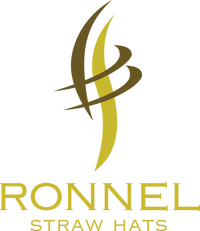The Story of the Panama Hat
1. A Legacy born in Ecuador
Despite its name, the Panama hat originates from Ecuador. Locally known as the toquilla straw hat, jipijapa, or Montecristi, its artisanal tradition dates back centuries. In the country’s coastal regions and Andean foothills, communities cultivate the Carludovica palmata plant, whose leaves produce the famous toquilla straw. Flexible, durable, and lightweight, this natural fiber became the ideal material for creating hats unlike any others in the world.
 Source: RONNEL
Source: RONNEL
2. Ancestral roots
Long before the arrival of Spanish conquistadors in the 16th century, Indigenous peoples were already wearing woven hats to protect themselves from the intense equatorial sun. Upon arriving on the coast of present-day Ecuador, the conquistadors observed locals wearing straw hats that covered the ears and neck. Their shape resembled the European wimples worn by nuns and widows, which led to the name toquilla, given both to the hat and to the straw itself.
Soon after, the Spaniards also began wearing these toquilla straw hats. Over time, the designs evolved, and by the 17th and 18th centuries, towns such as Montecristi and Jipijapa had become renowned centers of hat-making craftsmanship. The weaving techniques they developed were so refined that even today, a “superfino” Panama hat can take anywhere from four to eight months to complete.
 Source: IA
Source: IA
3. Key figures and commercial expansion
According to Guayaquil historian Melvin Hoyos, in 1835 the Spaniard Manuel Alfaro y González, a political exile, arrived in Montecristi, Ecuador, where he became captivated by toquilla straw. With the support of María Natividad Delgado, who would later become his wife, he embarked on an ambitious project to produce and export “Montecristi” hats. From this union was born Eloy Alfaro Delgado, future president of Ecuador.
The business grew significantly during the construction of the Panama Canal, supplying thousands of hats to workers to protect them from the sun and dust.
At the same time, and according to a book preserved at the Mama Nati Museum in Tabacundo, several merchants from this town, including Joaquín Aguilar, José Cevallos, Juan Vallejo, José Torres, Pablo Mármol, Abel Estrella, among others, expanded the trade of toquilla straw hats throughout cities and regions in Ecuador and abroad, reaching markets in Central America, the Caribbean, New York, San José, Costa Rica, Havana, and Panama.
4. The scientific name is established
In the 18th century, the use of toquilla straw hats became popular among the colonial nobility, to the point that the King of Spain commissioned woven pieces for his wife. Botanists discovered that the straw came from a palm that grows only in areas near the Ecuadorian coast, between 100 and 400 meters above sea level. In honor of King Charles IV of Spain and his wife Ludovica, they gave it the scientific name Carludovica palmata.
5. The name confusion
In the 19th century, Ecuador exported most of its hats through Panama, a strategic hub in international trade routes. During the California Gold Rush, thousands of travelers passed through the isthmus and purchased these hats, assuming they were made locally. The confusion became permanent in 1855, when the hats were showcased at the Paris World Fair under the name Panama Hats, without reference to their true Ecuadorian origin.
Emperor Napoleon III helped popularize the Montecristi hat, spreading its elegance across Europe. In Great Britain, the Prince of Wales — later King Edward VII — also embraced the Panama hat, further cementing its image as a symbol of refinement.
Another episode further solidified this mistaken name: Manuel Alfaro y González made a hat for U.S. President Theodore Roosevelt, the guest of honor at the inauguration of the Panama Canal, at the request of Panamanian President Belisario Porras. His only condition was that the Ecuadorian origin of the hat be acknowledged. However, this never happened, and the world continued to know the toquilla straw hat by the name of its port of shipment rather than its true country of origin.

6. An Icon in history
The Panama hat’s worldwide fame reached its peak in 1906, when U.S. President Theodore Roosevelt was photographed wearing one during his visit to the construction of the Panama Canal. The image, widely circulated in the international press, forever linked this hat with elegance, adventure, and tropical style.

7. Recognition and preservation
In 2012, UNESCO recognized the art of weaving the toquilla straw hat as an Intangible Cultural Heritage of Humanity. This acknowledgment seeks to protect and promote a tradition passed down from generation to generation, one that requires not only technical mastery but also deep knowledge of the material, climate, and ideal weaving conditions..

Source: UNESCO
8. RONNEL: Tradition with a Contemporary Vision
The RONNEL brand also carries forward a family legacy: the grandson of José Cevallos, one of the Tabacundo merchants who brought the toquilla straw hat to the international market, now continues his grandfather’s tradition through the creation of his own family brand.
RONNEL’s mission is to preserve this valuable heritage alongside his family, to respect Ecuadorian traditions, and to actively contribute to the development of the local community. At RONNEL, we honour this Ecuadorian heritage by preserving ancestral weaving techniques while adding a modern touch. Each hat is handwoven by expert artisans, carefully selected for its quality, and finished with details that reflect today’s style trends.
Discover the complete story of RONNEL and immerse yourself in a heritage that spans generations.

Source : UNESCO Source: RONNEL
Source: RONNEL

